The Bells of Brasov
Hour by hour, the sound of bells mark the passing time in one of the most beautiful cities of Europe - Issue # 35
Church bells chiming wake us at 7am every morning while living in the very center of the city of Brasov. Not one, but several church bells chime, from deep to much higher octaves, like a concert of bells.
And yet, this chorus of bells is not too loud, far from annoying. It is, in fact, a pleasant combination of sounds to start the day with.
The concert repeats every hour, marking the passing time. Some bells chime every half hour. Even with fewer bells, the sound is still beautiful. A reminder that we are in the heart of the city, home to several churches, of all different denominations.
Though they cater to different belief systems, they all mark the passing time, just the same.
Dear Readers,
I started writing this post in Brasov, sitting on a rooftop balcony overlooking the Cenk - Tampa Mountain with the Brasov sign, filled with trees showcasing their autumn colors. As I started writing, I watched a cat making her way across a lower rooftop and two sparrows sitting on the gutter near me.
The city was my home once, about forty years ago, for two years, as a high-schooler in Communist Romania. I didn’t enjoy living there. I didn’t like the city at all. It was bleak, dark, cold - and I don’t just mean the weather.
But that time passed. Now, it is one of my favorite cities not only in Romania, but in the world. Friendly, sunny and bright, its centuries-old buildings renovated and beautiful, the trees on the mountain offering a gorgeous backdrop to it all, Brasov, nicknamed the king of the Romanian cities, is a favorite of tourists from all over the world.
Time changes everything. And the bells of Brasov remind us of this, while marking the passing time, hour by hour.
Hope you enjoy this post about the beautiful city of Brasov, Brassó, Kronstadt.
Awaken by the bells, we look out the window, where the first thing we notice above the rooftops are the gorgeous fall colors of the forested Tampa mountain.
Unfortunately, the view also includes the intrusive, gaudy Hollywood-like sign of the city’s name. Someone must’ve thought we may forget it otherwise.
Maybe with good reason. After all, some time ago, the city was named Stalin City - with its name intrusively carved on the same mountainside by trees cut to spell its name.
Long before that, the city’s name was Kronstadt in German and Brassó in Hungarian, names we still use when speaking of the city in those languages. So, yes, maybe it is important to keep reminding everyone that the city’s official name is Brasov now.
Near the huge letters, an enormous Romanian flag reminds us of the country we are in, as well. Just in case we forget. Again, some time ago it was part of another country - but no one remembers that now, anyway. Still, the flag and the sign - although they ruin the view of the forested mountainside - are a loud reminder of where we are.
And yet, it is the unobtrusive sound of the bells of Brasov that reminds us of our surroundings, and the passing of time.
Every morning, when we heard the bells, we knew what time it was without checking a watch. 7am.
The city was waking up.
But besides the bells chiming, we wouldn’t have known it.
On the top floor of a centuries-old building, with thick walls, opening to a pedestrian-only street, the noise of the waking city didn’t reach us.
Only the bells of Brasov told us the time.
On vacation, we didn’t need to hurry to get out of bed. We’d start our day with a cup of coffee, whether we made it ourselves or got it from a cafe nearby. We walked down the street, stopping to buy some hot-from-the-oven baked goods, large pretzels sprinkled with sunflower and poppy seeds or topped with cheese.
Then we began exploring the city.
Our city walks included strolls along the Under Tampa Promenade, a place where the passing time over Brasov was obvious, especially for me, who once lived there.
The Promenade and trails up the mountain starting from it were the same as when I lived there, and even when my parents were dating.
When walking it with my brother, we reminisced about stories we heard from our parents about my mother’s first walk in Brasov along this same trail, and up the hill, just to end with a broken heel of her stilettos - she wore them on a date that eventually included a hike up the mountain.
The forest is older, more mature, but really hasn’t changed much since I lived there.
It has seen time pass over the city; stone buildings, a wall with bastions and towers being built, used to protect the city, then abandoned, and recently renovated, and opened for tourists to visit.
It has seen people of different ethnicities, different belief systems, different cultural status live in peace together or fight each other.
It has also seen me as a young child walking the same path with my grandparents, parents, siblings, later with my husband and my own children.
Some days we walked up to the Citadel, to visit the ancient structure and watch the city below.
Built in the 14th century, the small citadel saw its share of history, and the time pass. From a defense tower, it changed into a citadel with added structures, then lay abandoned while watching the city’s life below, eventually used as a restaurant, then abandoned again, and now opened for visitors who enjoy learning about its history.
Our walks often took us along the old city walls, and from there up the hill to both the White Tower and\or the Black Tower. Built in medieval times, these walls once protected the city during times of war, then became obsolete, but still stand, watching people walk along them, from medieval times to today.
The Towers, both at the end of a short but steep walk starting at the walkway along the city wall, looked down to the city since medieval times. Built to last, they are still standing, welcoming visitors to their balconies for views of the city below.
During the time we spent in town, we also visited Poiana Brasov several times.
Sometimes, we walked through the forest, following the “Old Route”, once used as a road for cars, but closed to traffic since 1966.
The road is now a footpath used by locals and visitors of Brasov alike, to walk in the forest to Poiana Brasov. It was especially beautiful in autumn, showcasing the colors of the forest. Witness to passing time as the seasons come and go in the forest.
The trail was one of our favorites while living in town. We hiked it several times, watching the leaves turn from green with a tiny color, to its peak colors of every shade of gold, yellow, red, eventually turning into rust and browns and slowly falling off the branches as time passed throughout the month.
Some days we walked the city streets, and tried every ornate door of the old buildings we passed, just to see what was behind it, today or in the past. The centuries-old, ornate buildings changed their purpose often over time.
Like the Main Branch of the City Library we visited in an ornate building dating from 1928, that once housed the Post Office.
Or the centuries-old Catherine’s Gate, the old entrance into the city built by the Tailors’ Guild in 1559, that now is home to the Forestry department of the University of Brasov.
Or the old City Council building that now houses a history museum where even I learned (or re-learned) some facts about the city.
And several times, we stopped at my grandparents’ gravesite. On a small hill overlooking the city center rest my grandparents, who called Brasov their home for over four decades, and gave me a home during my high school years.
They lived through many changes to the city, but I also think even more changes happened since they have been gone. When I look around, I also see the city with their eyes, based on the stories they have told me over the years.
By the time the bells told us it was noon, we made our way back to the apartment for a lunch break.
If we had no food in the apartment, or wandered off too far, we would stop at a restaurant instead, though we usually saved our outings for dinners.
Over the weeks, we got to know every restaurant in the center of town. We had several favorites where they already knew us and even remembered our favorite meals.
During early afternoons, we sat on our rooftop balcony, enjoying the views of the mountain above the city.
Later in the day, we strolled along the city streets again, often people-watching, walking into bookstores housed in historic buildings, ending our walks at the Black Church.
The clock on the church’s tower told us the time, even without the bells chiming. Watching it for decades, while I felt it was there for decoration, since it never worked, now we could rely on it to tell us the exact time.
On Saturday nights, at six o’clock, we walked into the Black Church to listen to their weekly organ concert. Played on one of the oldest church organs in Europe, we heard classical pieces, including several Bach-pieces, as well as a few modern ones, often written by the organ-players themselves.
By the time we returned to our apartment in the city, we listened to the last chimes of the bells for the day.
The bells of Brasov were always quiet at night. Then started chiming again the next morning, marking the start of a new day.
Hope you enjoyed reading about Brasov.
Until next time,
Emese
Thank you for being here,
please ❤️ (below) if you enjoyed this piece, it will help others find it.
If you’d like to read more about Brasov, you can check out my other posts:
An Insider Guide to Charming Brasov


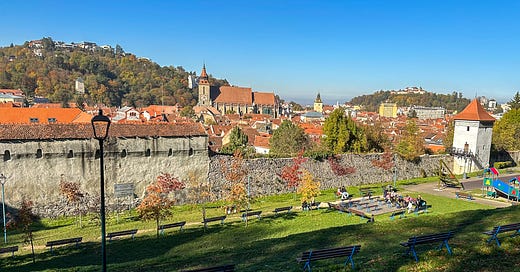


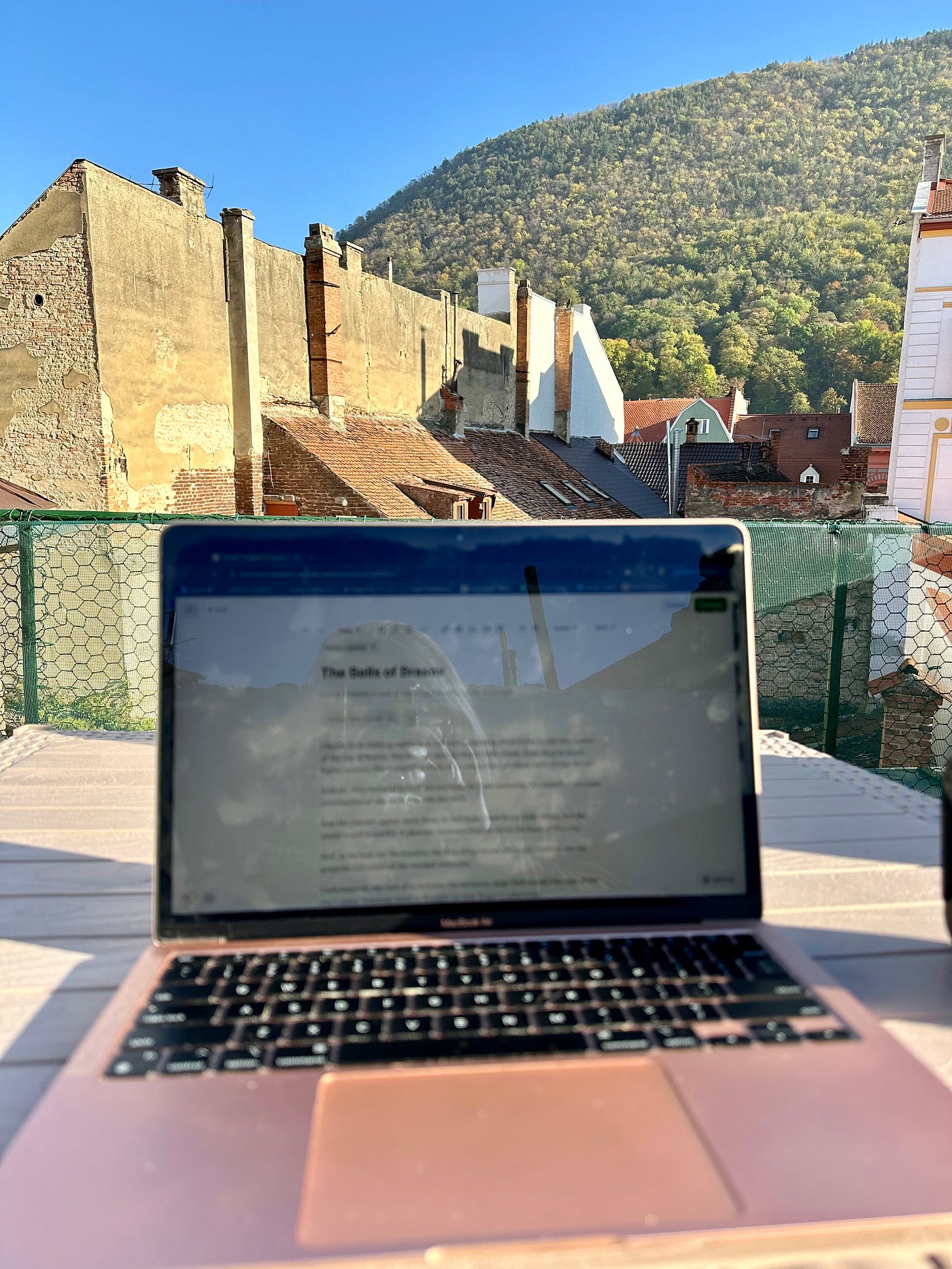
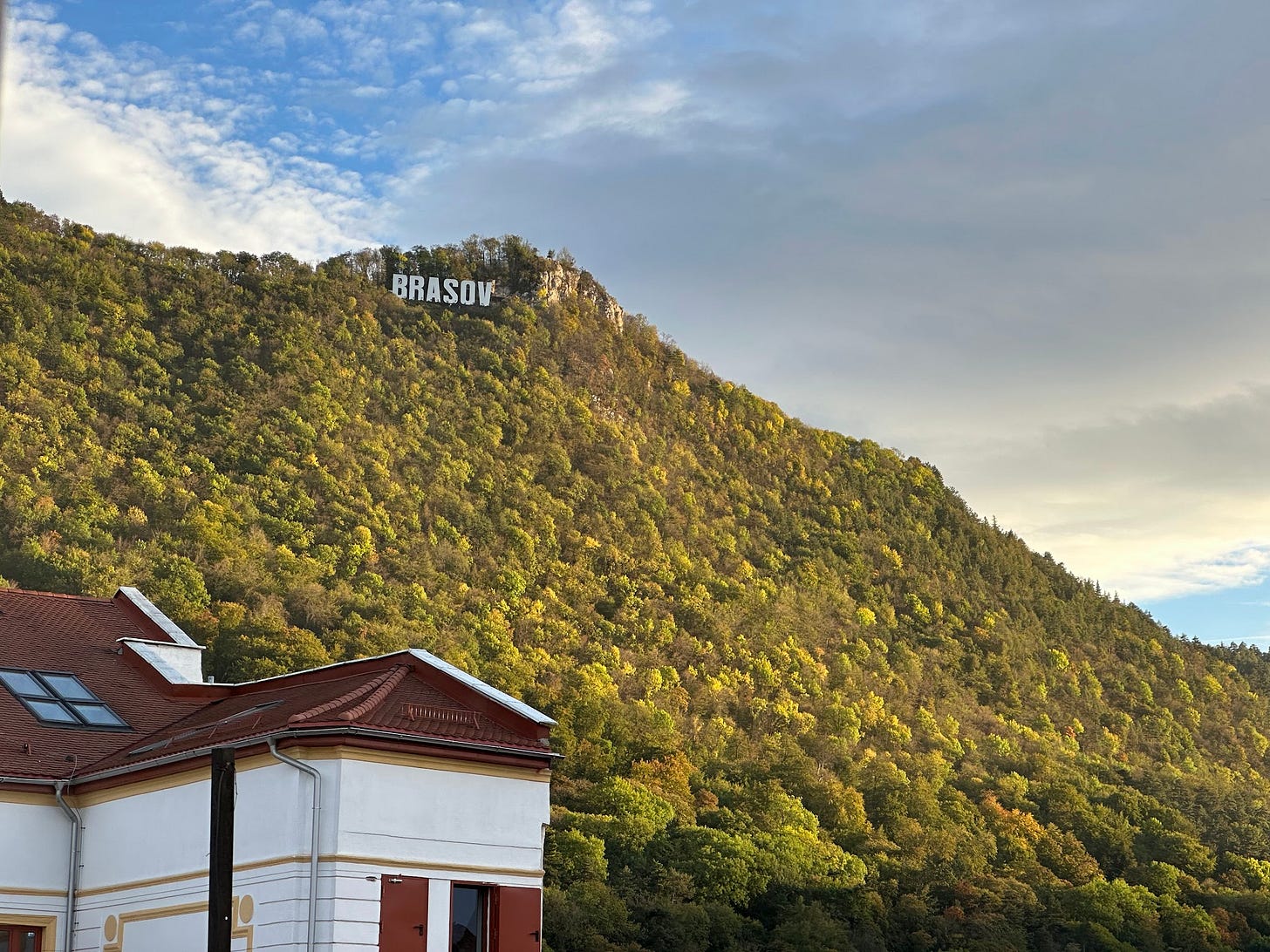
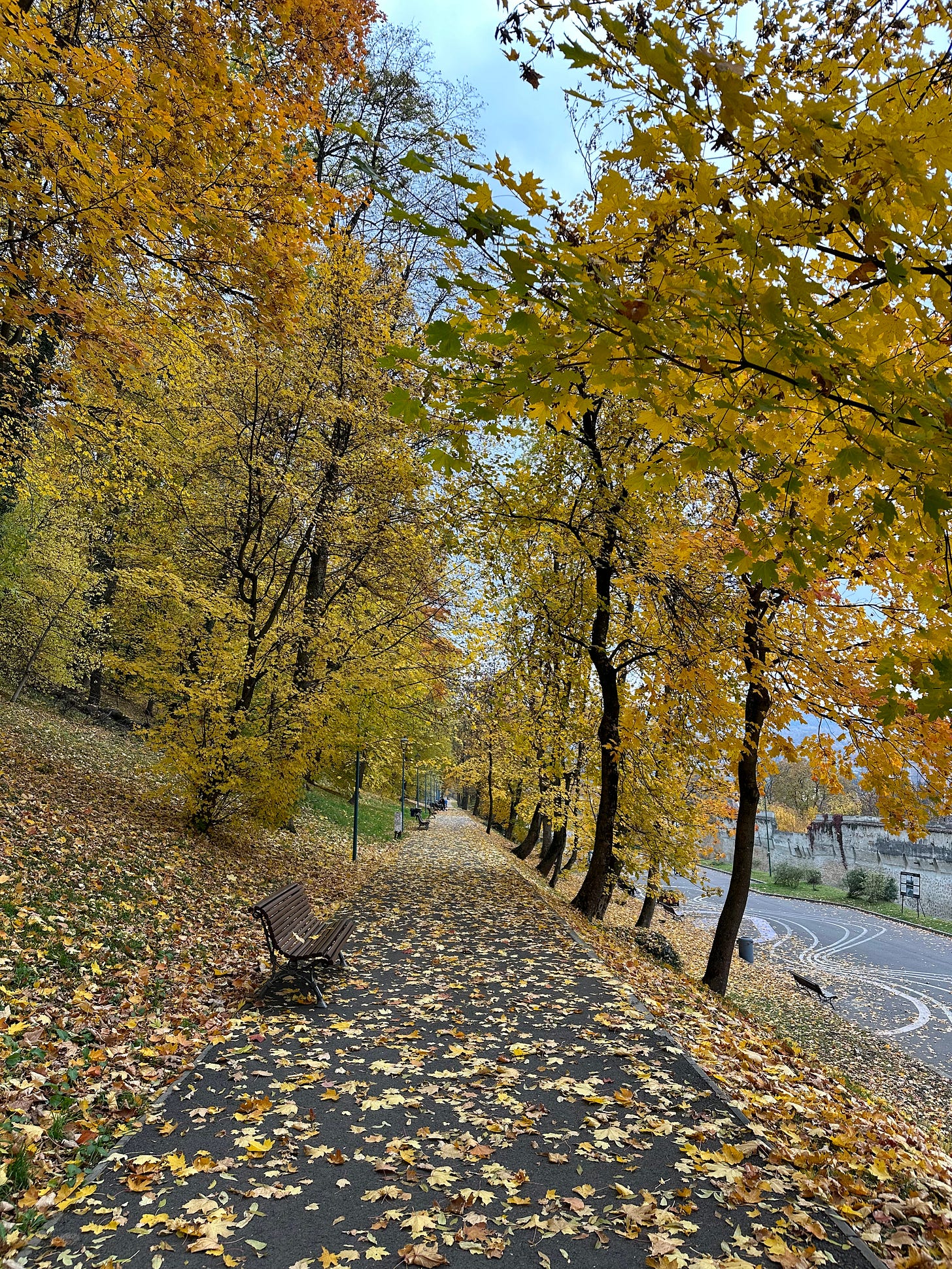
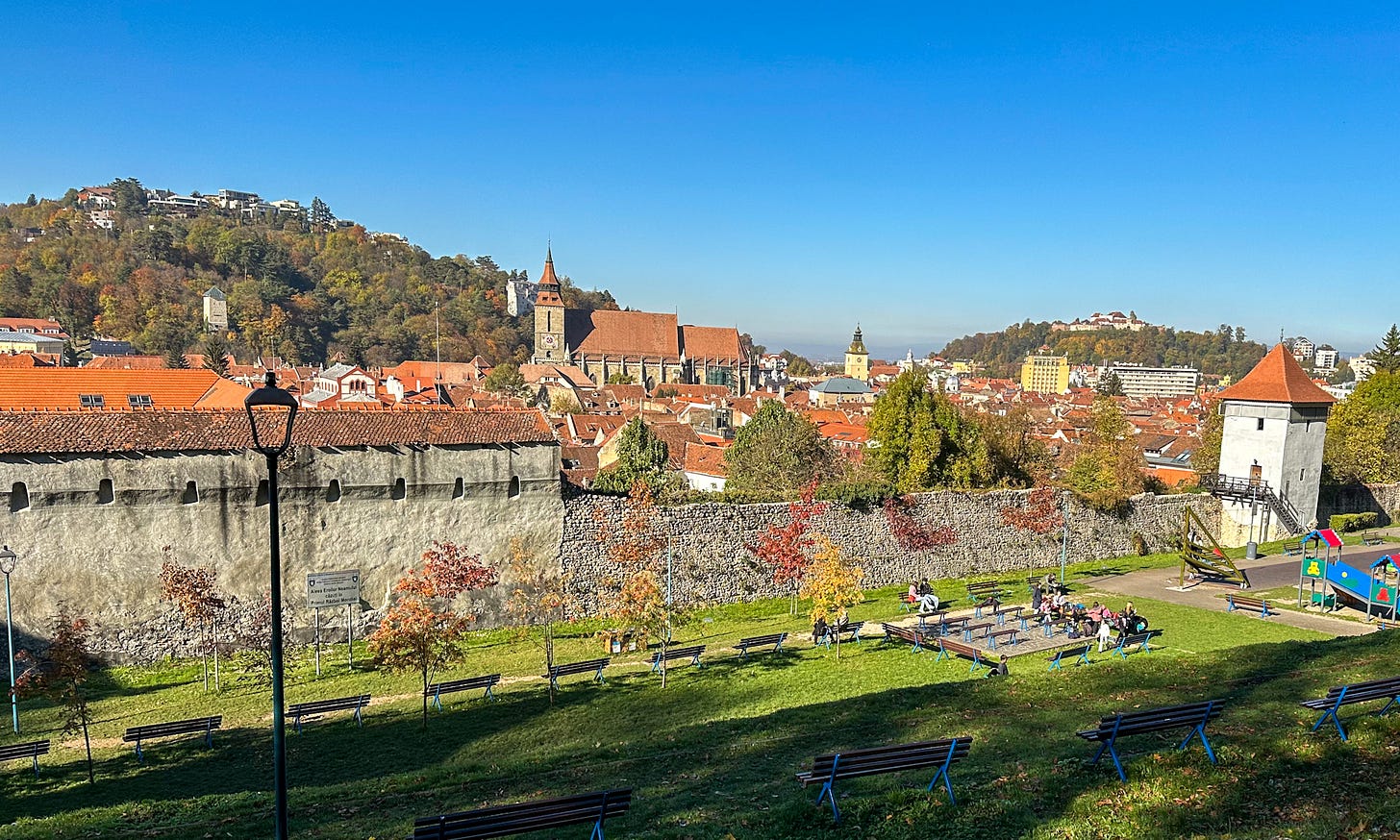
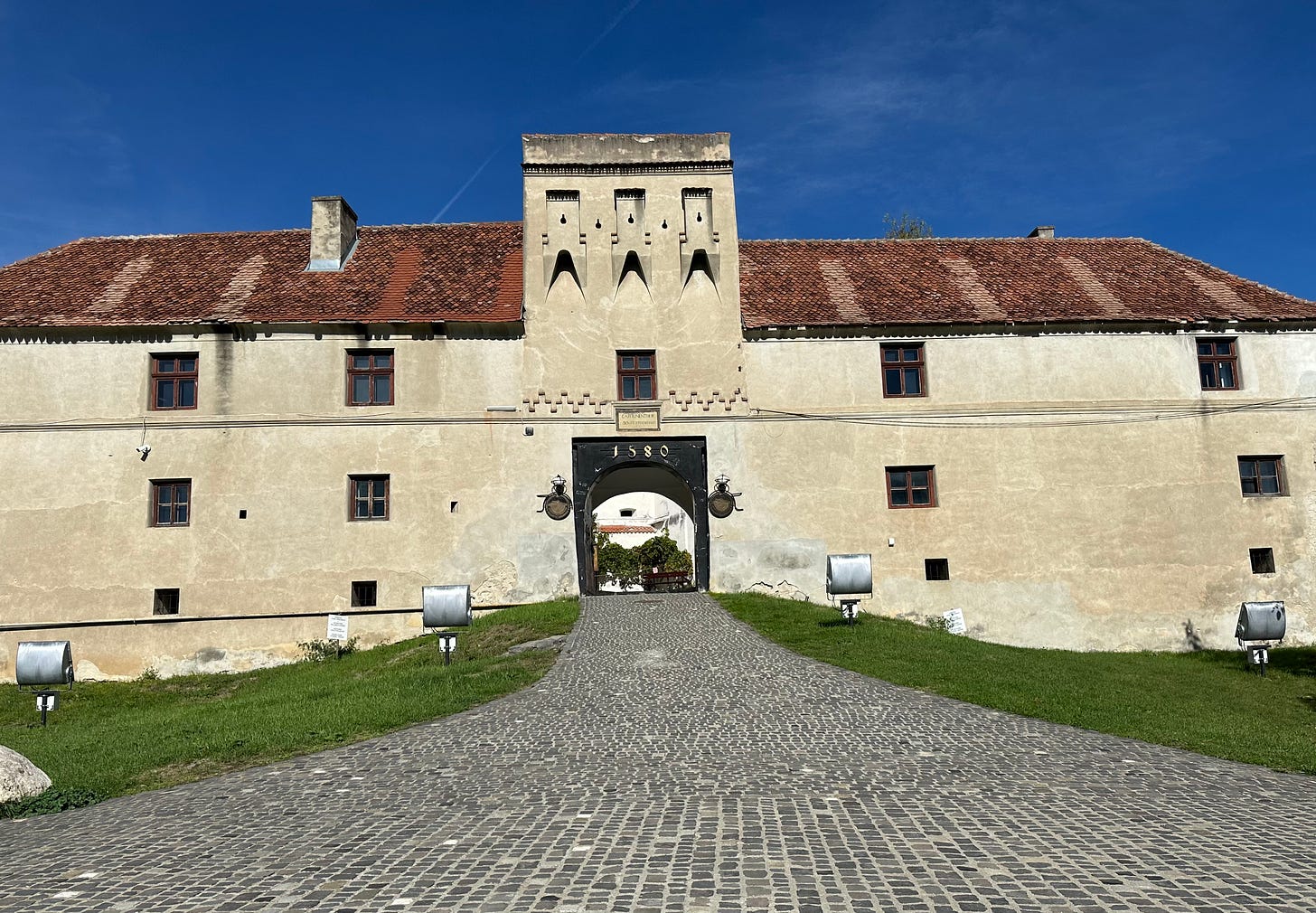
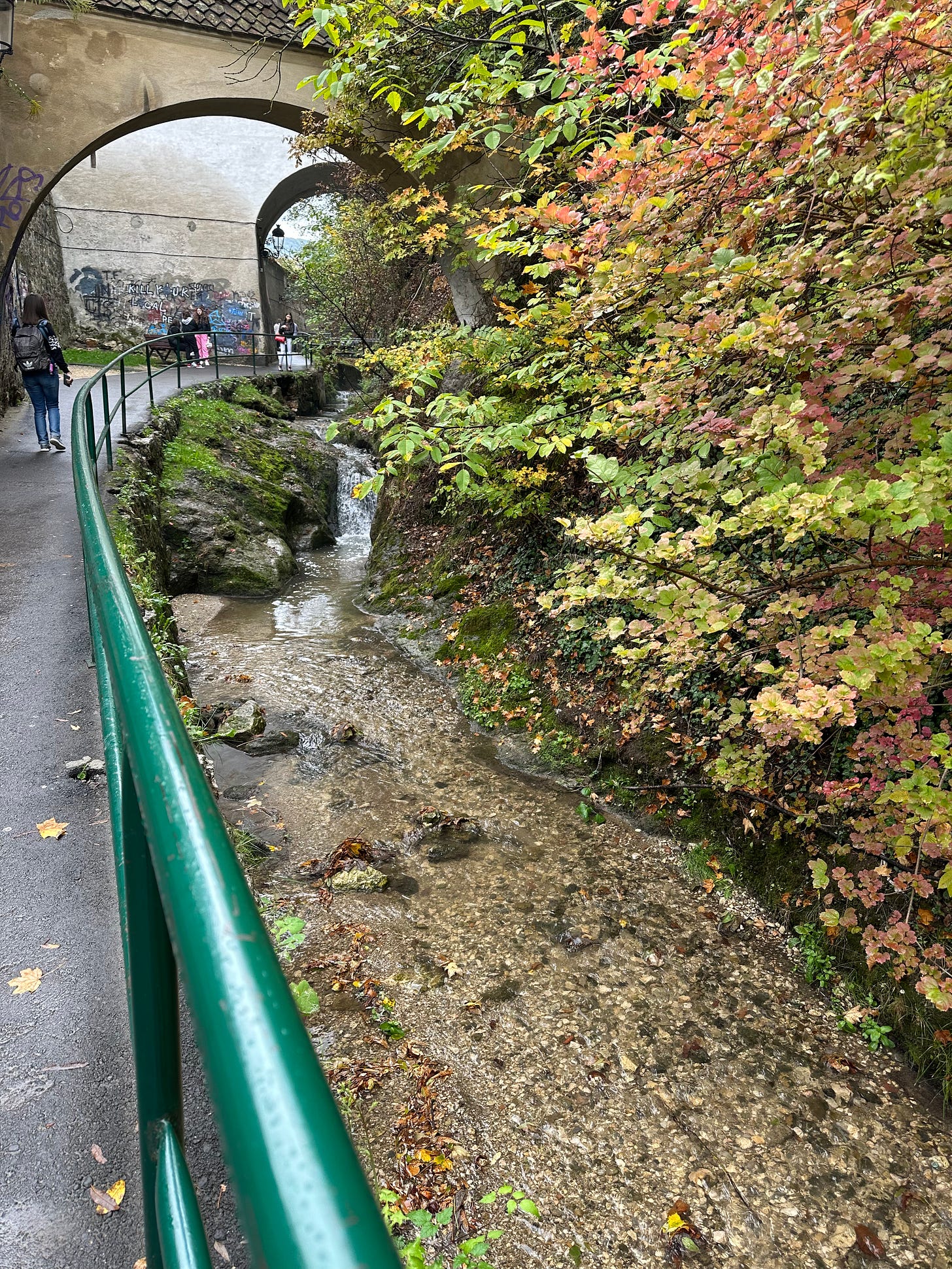
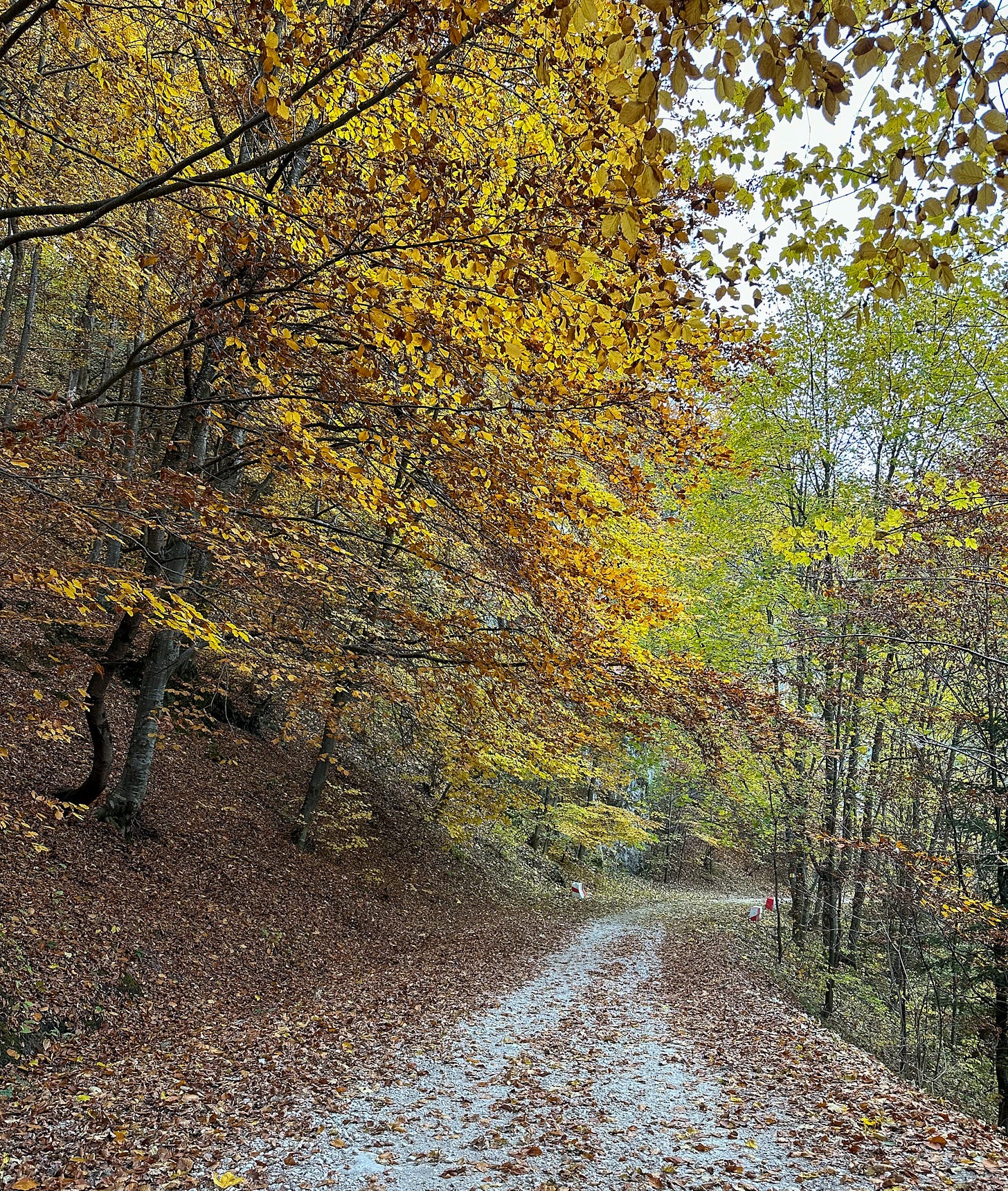
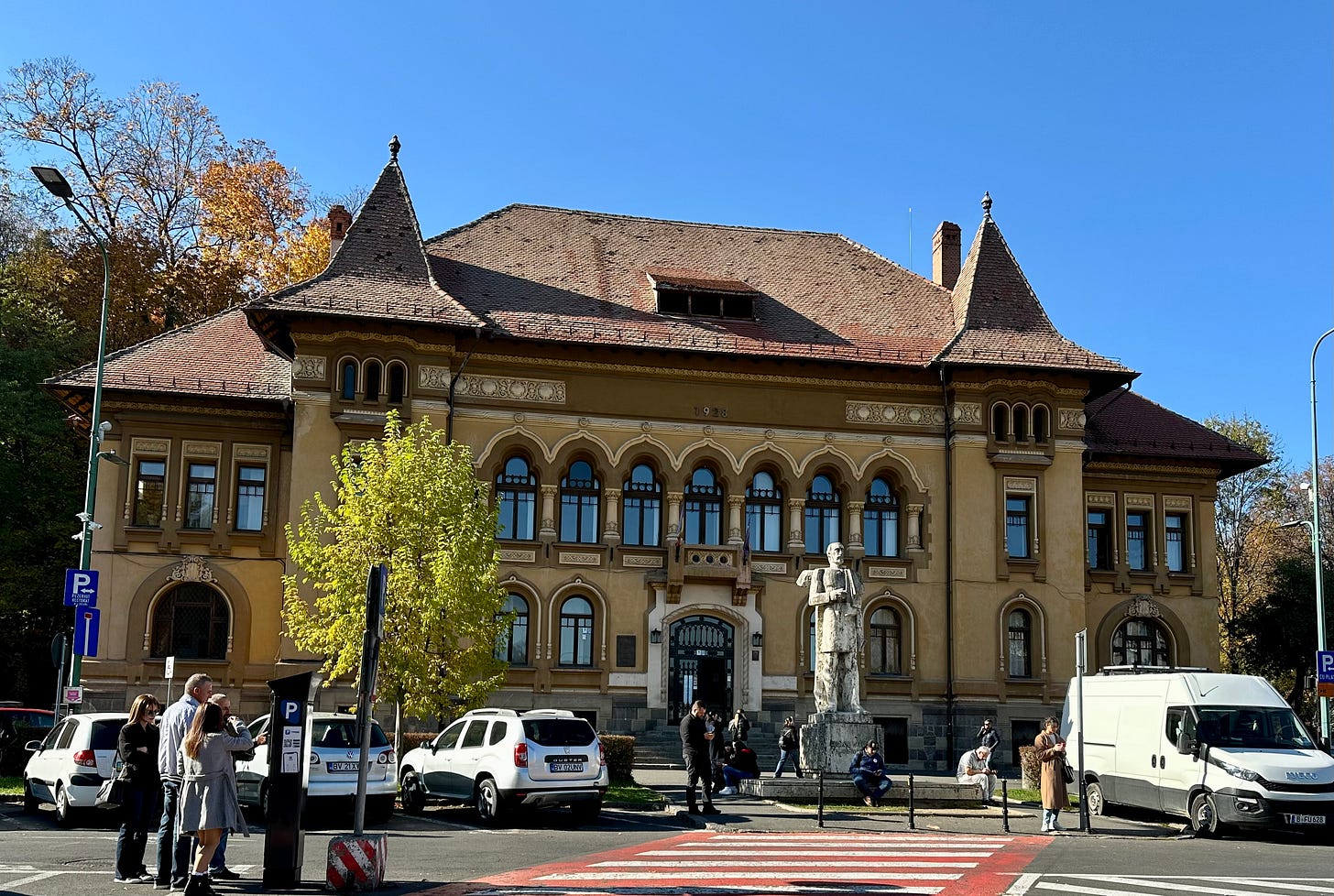
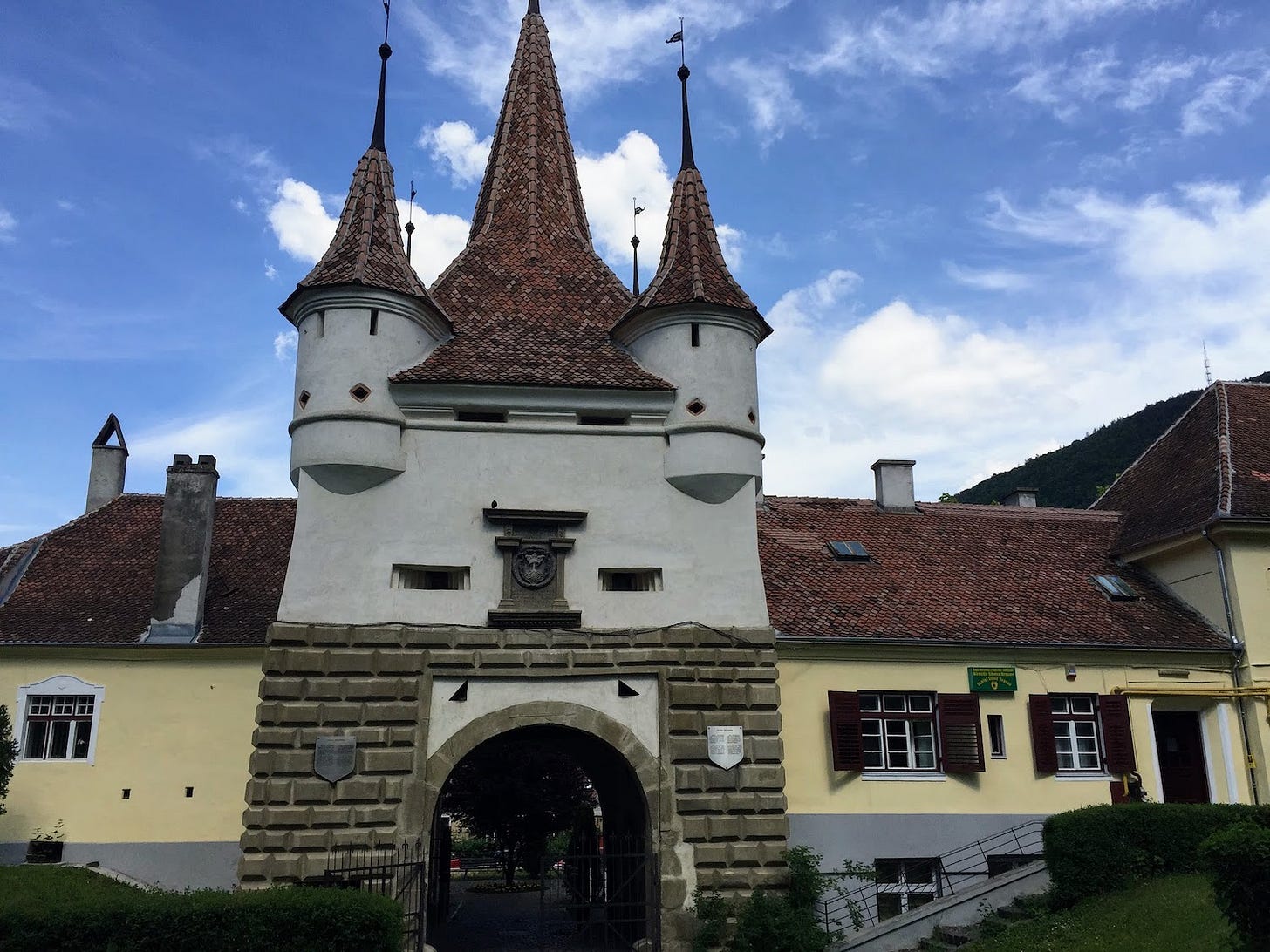
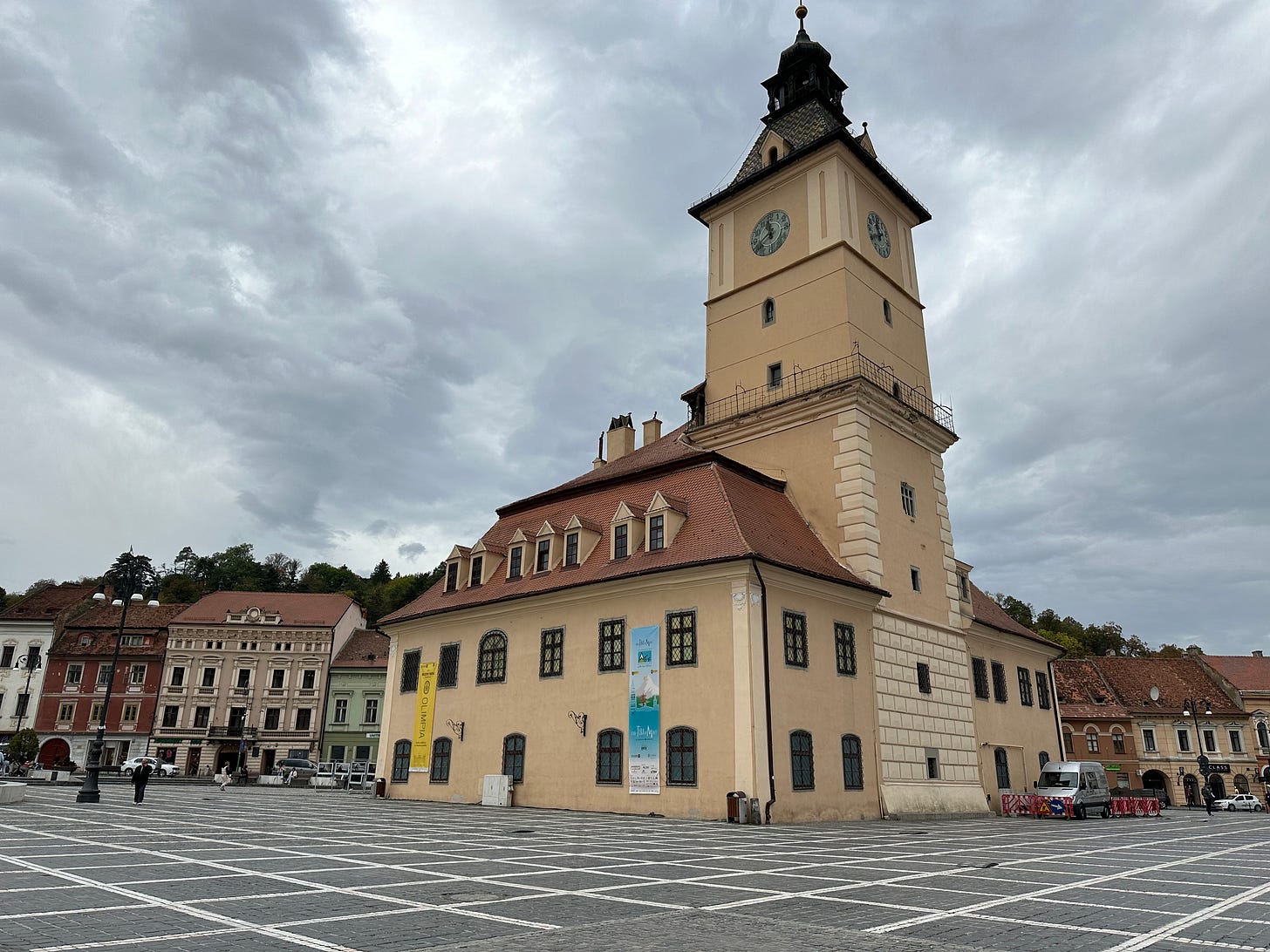
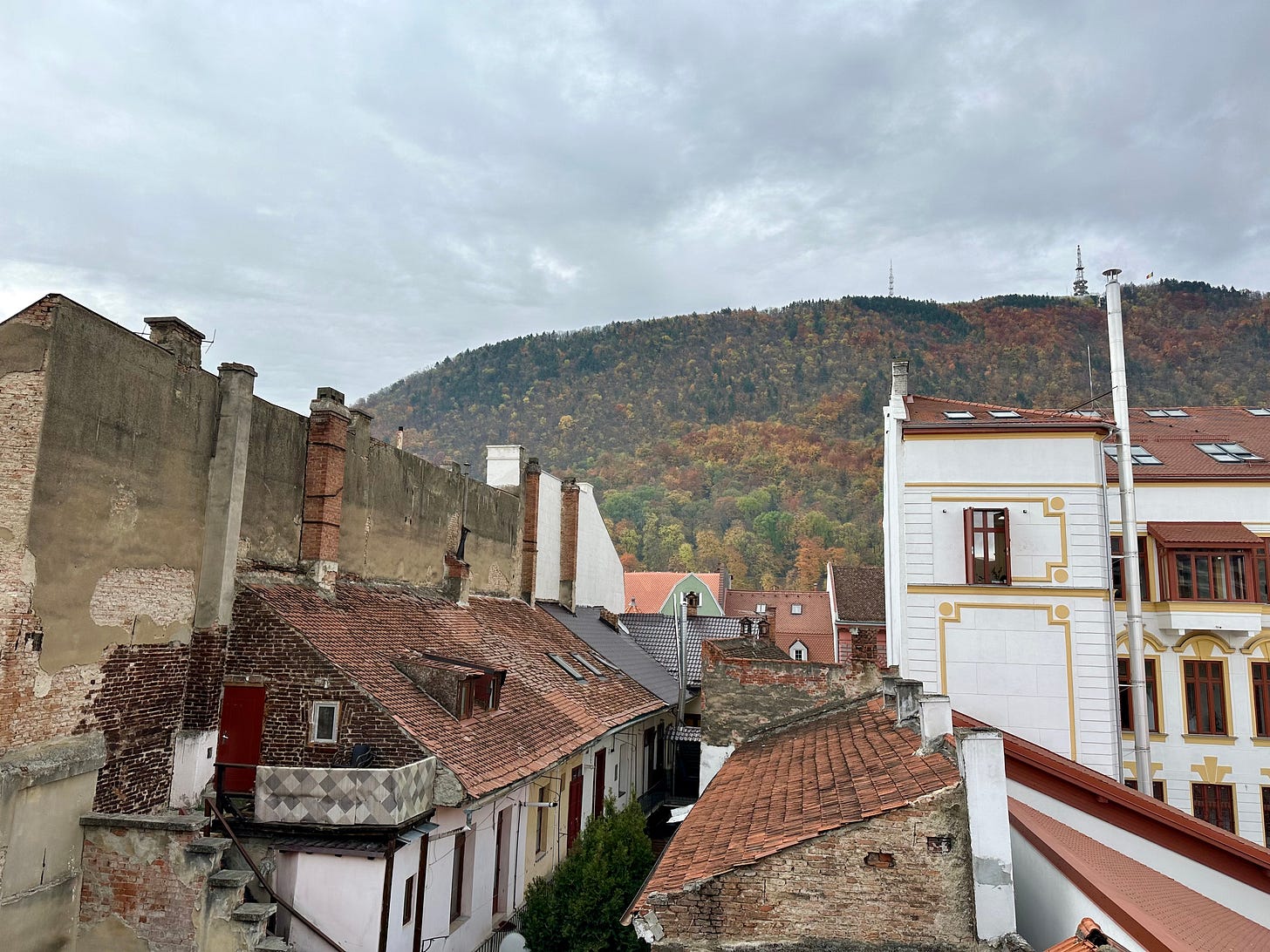
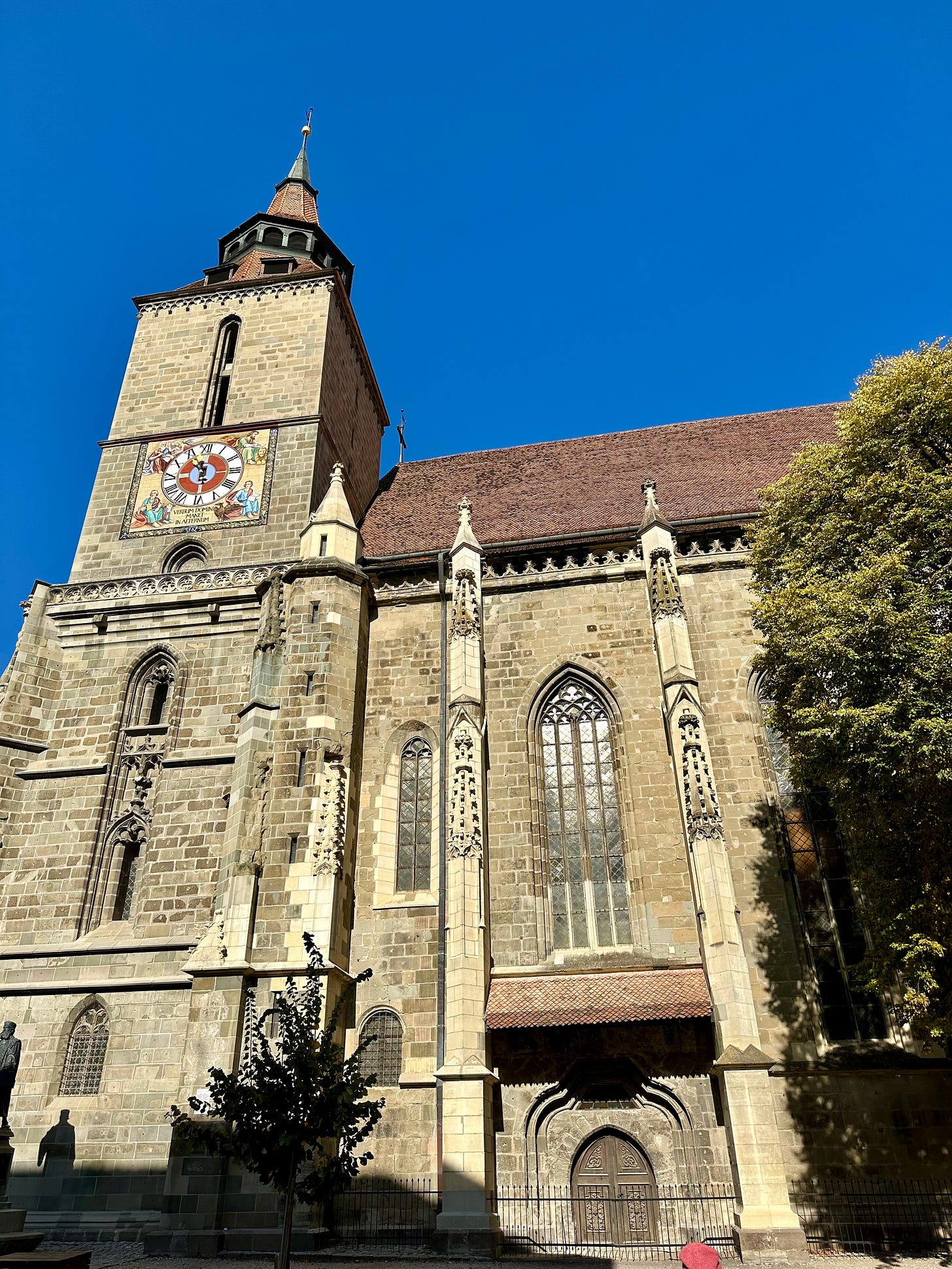
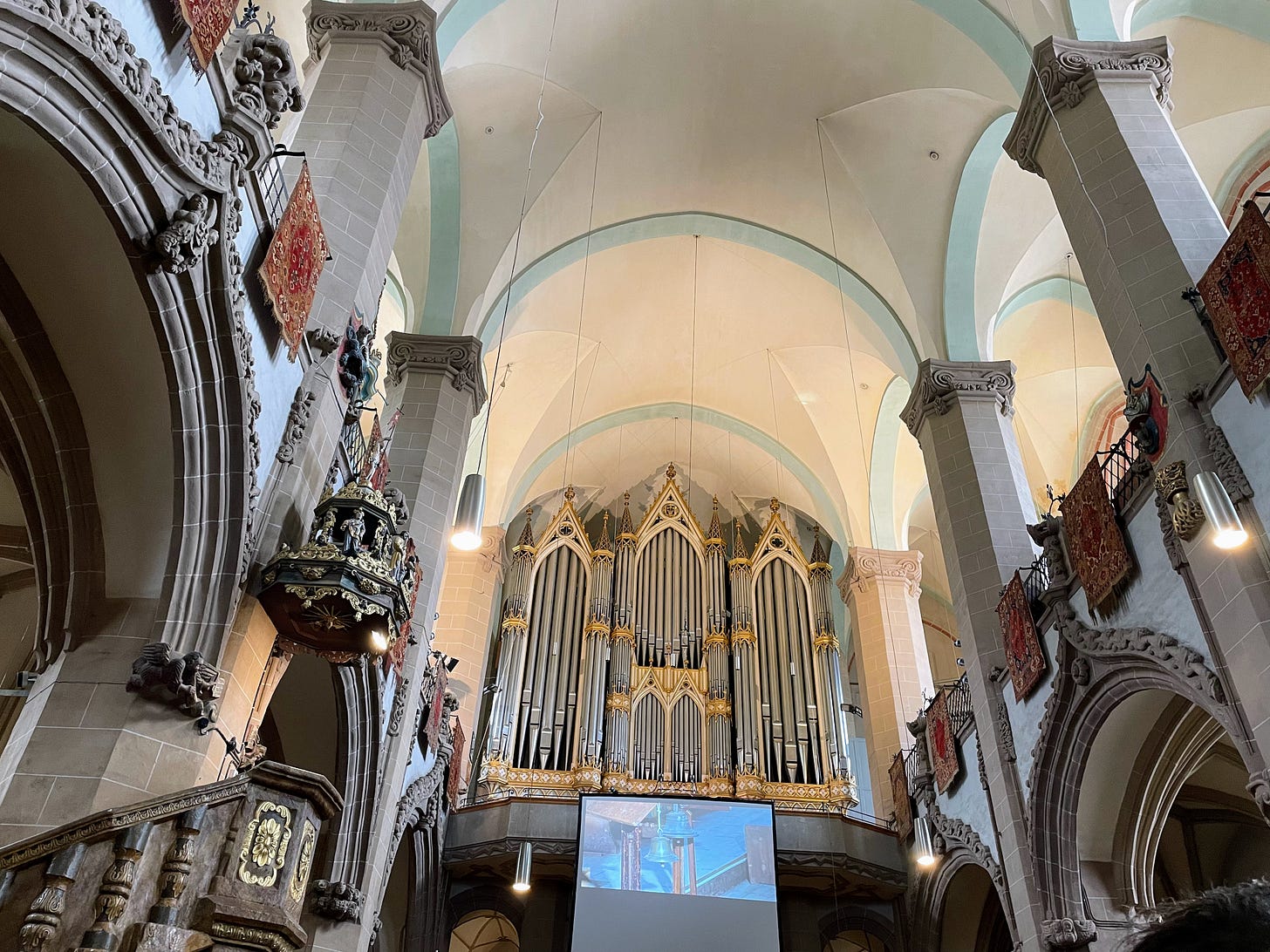
i loved reading this :p
Lovely city! Fascinating read about the evolution of its name. I love its picturesque landscapes and medieval architecture.